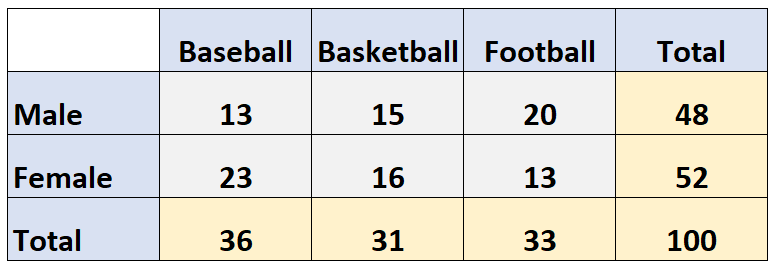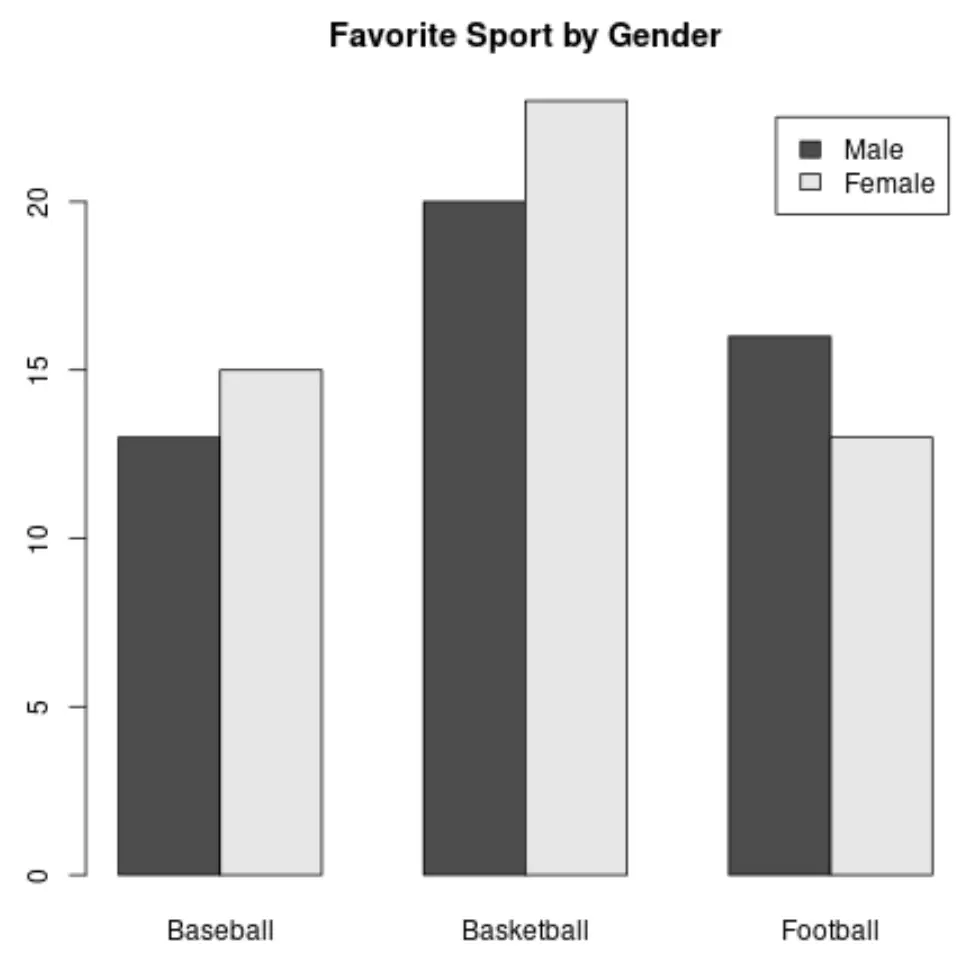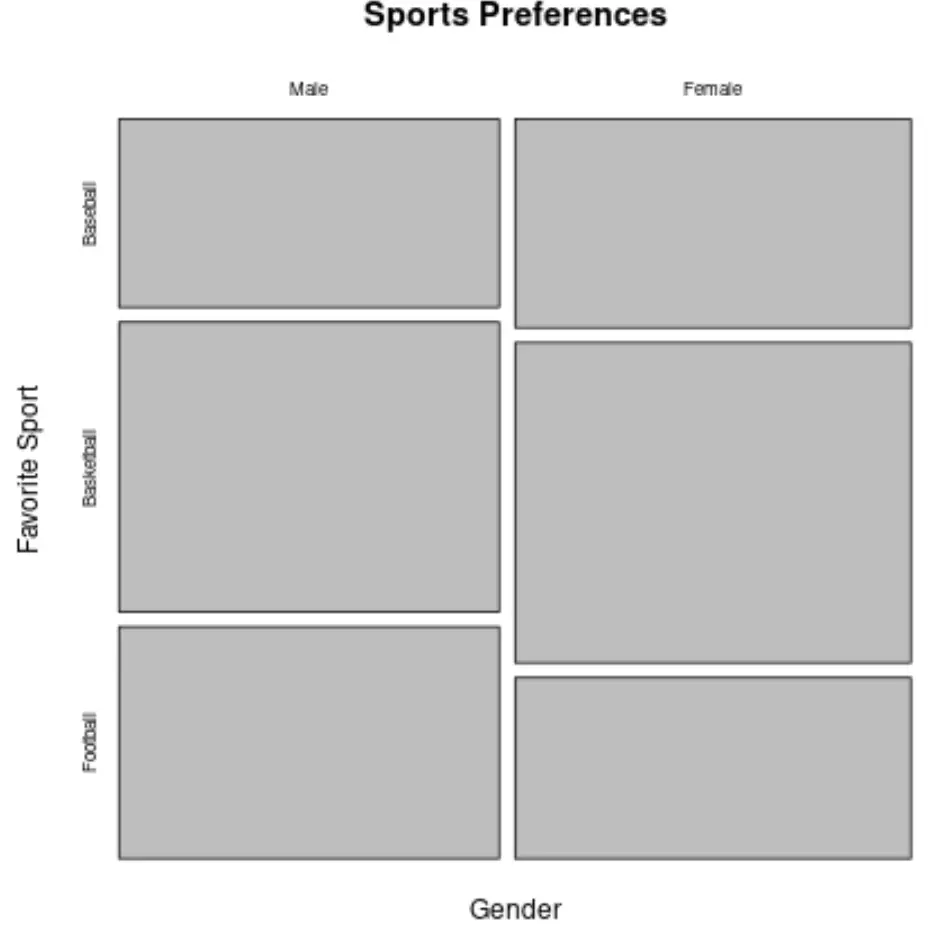วิธีสร้างตารางแบบสองทางใน r (พร้อมตัวอย่าง)
ตารางสองทาง คือตารางประเภทหนึ่งที่แสดงความถี่ของตัวแปรประเภทสองตัว
ตัวอย่างเช่น ตารางสองทางต่อไปนี้แสดงผลการสำรวจที่ถามผู้คน 100 คนว่าพวกเขาชอบกีฬาประเภทใด: เบสบอล บาสเก็ตบอล หรือฟุตบอล
แถวแสดงเพศของผู้ตอบแบบสอบถาม และคอลัมน์ระบุกีฬาที่พวกเขาเลือก:

บทช่วยสอนนี้มีตัวอย่างหลายประการของการสร้างและการใช้อาร์เรย์แบบสองทิศทางใน R
ตัวอย่างที่ 1: สร้างตารางรายการคู่ตั้งแต่เริ่มต้น
รหัสต่อไปนี้แสดงวิธีการสร้างตารางรายการคู่ตั้งแต่เริ่มต้นโดยใช้ฟังก์ชัน as.table() :
#create matrix data <- matrix(c(13, 23, 15, 16, 20, 13), ncol= 3 ) #specify row and column names of matrix rownames(data) <- c('Male', 'Female') colnames(data) <- c('Baseball', 'Basketball', 'Football') #convert matrix to table data <- as. table (data) #display table data Baseball Basketball Soccer Male 13 15 20 Female 23 16 13
ตัวอย่างที่ 2: สร้างตารางแบบสองทิศทางจากข้อมูล
รหัสต่อไปนี้แสดงวิธีการสร้างตารางแบบสองทิศทางจากกรอบข้อมูล:
#create data frame df <- data. frame (sport=c(' Base ', ' Base ', ' Bask ', ' Foot ', ' Foot '), gender=c(' Male ', ' Female ', ' Male ', ' Male ', ' Female ')) #view data frame df #create two way table from data frame data <- table(df$gender, df$sport) #display two way table data Base Basketball Female 1 0 1 Male 1 1 1
ตัวอย่างที่ 3: คำนวณผลรวมมาร์จิ้นของตารางรายการคู่
รหัสต่อไปนี้แสดงวิธีการคำนวณผลรวมมาร์จิ้นของตารางแบบสองทางโดยใช้ฟังก์ชัน margin.table() :
#create matrix of data data <- matrix(c(13, 15, 20, 23, 16, 13), ncol=3) rownames(data) <- c(' Male ', ' Female ') colnames(data) <- c(' Baseball ', ' Basketball ', ' Football ') #find sum of genders margin. table (data, margin=1) Male Female 49 51 #find sum of sports margin. table (data, margin=2) Baseball Basketball Soccer 28 43 29
ตัวอย่างที่ 4: การแสดงภาพความถี่ของตารางแบบสองทิศทาง
วิธีหนึ่งในการแสดงภาพความถี่ในตารางแบบสองทางคือการสร้าง barplot :
barplot(data, legend= True , beside= True , main=' Favorite Sport by Gender ')

อีกวิธีหนึ่งในการแสดงภาพความถี่ในตารางแบบสองทางคือการสร้าง พล็อตแบบเรียงต่อกัน :
mosaicplot(data, main=' Sports Preferences ', xlab=' Gender ', ylab=' Favorite Sport ')

คุณสามารถค้นหาบทช่วยสอน R เพิ่มเติมได้ใน หน้านี้